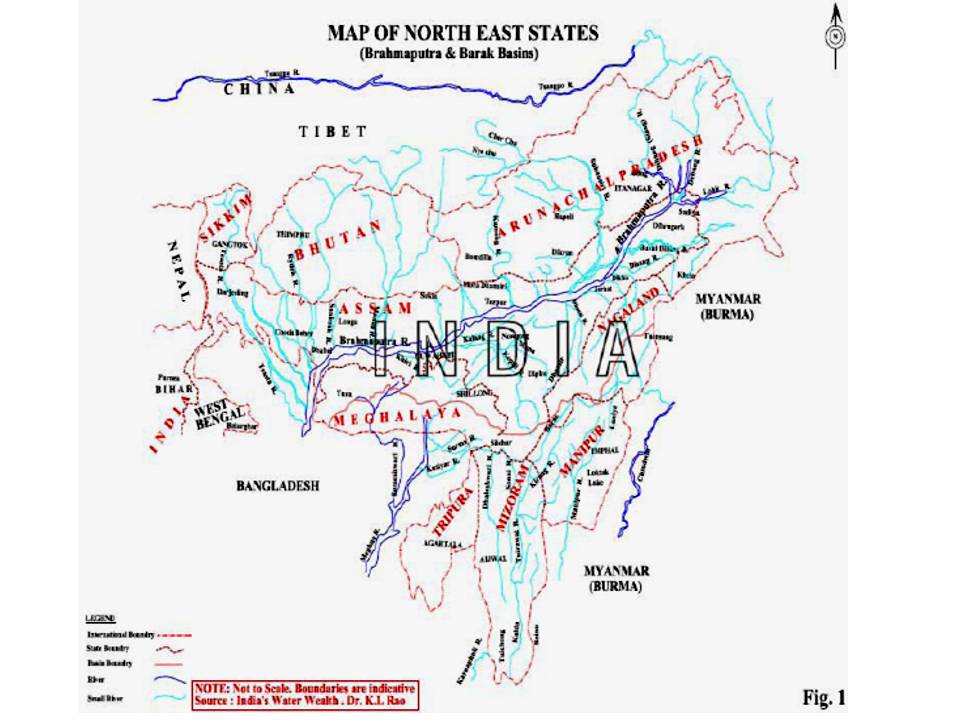- Topics
- Feature
- Opportunities & Events
- Data
- Hindi Portal
- Topics
- Feature
- Opportunities & Events
- Data
- Hindi Portal
The main objectives of the hydropower study are as follows:

Map of the north-east states
Schematic map of the Brahmaputra showing annual flows
General issues: The positive impacts of hydropower, including it's contribution to system reliability, increased infrastructure in the region are explained. The report of the World Commission on Dams is then referred to, and the adverse social and environmental impacts of dams listed. It is recommended that a strategic environmental assessment be carried out before any potential development of hydropower. It also states that hydropower development should aim to compensate affected communities, and include them in project planning.
Technical and organizational issues in the Northeastern Region: Difficult access, remote locations and lack of infrastructure has been cited as some of the problems in development of hydropower, as have rehabilitation of project-affected populations and getting forest clearance. It also mentions that storage projects on Siang, Subansiri, Lohit and Barak basins have now been redesigned as cascades of dams to minimize submergence. This section also elaborates on the perceived desirability of storage dams deeming them 'essential for maximizing benefits' while giving a nod to the 'issues of uneven distribution of benefits and costs, sharing the cost of flood moderation, and rehabilitation of project-affected populations.'
International issues: This section takes into account the complexities of trans-boundary rivers. The issues with all of the involved neighbours, India, China (Tibet), Bhutan, Bangladesh and Myanmar are detailed.
The appendices present data pertaining to the state of energy and hydropower in the north eastern region as well as in the nation. These figures are valid till 31 March 2005. The data sets included are as follows: